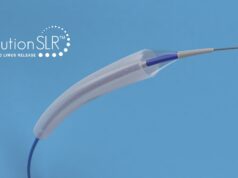
TriReme Medical, a subsidiary of QT Vascular, has announced that its angiographic data from a 24-month follow-up of patients with de novo lesions treated with Chocolate Heart as a standalone therapy have shown negative late lumen loss (-0.06).
Chocolate Heart is the drug-coated version of the company’s Chocolate coronary balloon. TriReme has added a proprietary coating with paclitaxel to Chocolate, intending to reduce the incidence of repeat procedures. This combination of the Chocolate technology and the therapeutic agent is also designed to allow certain patients to be treated with the Chocolate Heart system, minimising the need for a stent.
The first-in-human study was conducted at Cecanot Hospital in Santo Domingo, Dominican Republic. The follow-up included 14 patients treated with Chocolate Heart that would have otherwise received a stent. At two years, the results show no late lumen loss (negative 0.06) and no further interventions.
“I would like to change my approaches for coronary arteries and use more drug-coated Chocolate balloons; I believe it may be the best for my patients.” says Carlos H Garcia-Lithgow, head of Interventional Cardiology, Cecanot, Santa Domingo, Dominican Republic, and the study’s principal investigator.
“These are impressive 24-month angiographic results showing negative late loss which basically means the arteries stayed wide open after two years. When compared to published data on drug-eluting coronary stents (0.1– 0.3mm of late lumen loss at 9-13 months),” states Alexandra Lansky, professor of Medicine, Heart and Vascular Clinical Research Program Yale University School of Medicine, New Haven, USA. “These data suggest that permanent implants could be avoided in a subset of patients. This is a small study…if the data is confirmed in larger studies, it could lead to a change in the way coronary lesions are treated,” states Alexandra Lansky, professor of Medicine, Heart and Vascular Clinical Research Program Yale University School of Medicine, New Haven, USA.
The initial six-month results of the trial were announced in January 2016.










